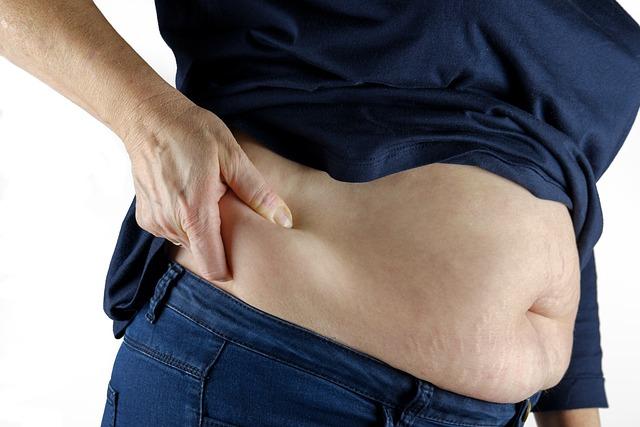In recent years, the pursuit of optimizing metabolic health has garnered significant attention, with increasing focus on the mechanisms that enhance fat oxidation. As individuals strive to improve energy efficiency and manage weight, strategic fasting and low-carbohydrate diets have emerged as powerful tools in this endeavor. These dietary strategies are not merely fleeting trends; they are grounded in physiological principles that can unlock the body’s ability to efficiently utilize fat as a primary fuel source. This article delves into the intricacies of how these approaches can be leveraged to augment fat oxidation, offering an analytical perspective on the underlying biological processes. By examining the synergy between intermittent fasting protocols and carbohydrate restriction, we aim to provide a comprehensive guide for those seeking to harness these strategies for enhanced metabolic outcomes.
Understanding the Science of Fat Oxidation
Fat oxidation is a metabolic process where the body breaks down fatty acids to produce energy. This process becomes particularly significant when the body shifts from using carbohydrates as its primary energy source to utilizing fats. Strategic fasting and low-carb diets are effective ways to enhance this metabolic pathway. During fasting, insulin levels drop, and the body turns to stored fat for energy, increasing the rate of fat oxidation. Similarly, low-carb diets reduce glycogen stores, prompting the body to burn fat for fuel.
To optimize fat oxidation, consider the following strategies:
- Intermittent Fasting: This approach cycles between periods of eating and fasting, encouraging the body to rely more on fat stores.
- Ketogenic Diet: By drastically reducing carbohydrate intake, the body enters a state of ketosis, where fat becomes the primary energy source.
- Exercise in a Fasted State: Engaging in physical activity without having eaten can further enhance fat oxidation rates.
- Monitor Macronutrient Intake: Focus on a higher intake of healthy fats and proteins while limiting carbs to sustain energy and support metabolic shifts.
These methods, when tailored to individual needs, can significantly enhance the body’s ability to oxidize fat, contributing to improved metabolic health and energy levels.

Implementing Strategic Fasting for Enhanced Fat Burning
Strategic fasting, when combined with a low-carb diet, can significantly enhance the body’s ability to oxidize fat. The key to this approach lies in timing and nutrient manipulation. During fasting periods, the body’s insulin levels drop, leading to an increase in the release of stored fatty acids from fat tissues. By consuming a low-carb diet, you further minimize insulin spikes, keeping the body in a fat-burning state for longer durations.
- Alternate Day Fasting: Involves fasting every other day, which can amplify fat oxidation by consistently alternating between fasting and eating.
- Time-Restricted Eating: Limits food intake to a specific window each day, typically 8 hours, allowing the body to switch to fat burning during the fasting period.
- Cyclic Ketogenic Diet: Integrates periods of higher carb intake to refill glycogen stores, followed by fasting or low-carb days to maximize fat burning.
Integrating these methods requires careful planning and an understanding of your body’s responses. Monitoring energy levels and adjusting fasting durations can help optimize results while maintaining nutritional balance and overall well-being.

Crafting a Low Carb Diet for Optimal Metabolic Health
Embracing a low carb diet can be a powerful strategy to enhance fat oxidation, a key component in improving metabolic health. By minimizing carbohydrate intake, your body is encouraged to utilize fat as its primary energy source. This metabolic shift not only supports weight loss but also enhances energy levels and cognitive function. To optimize fat oxidation, consider incorporating strategic fasting into your routine. Fasting periods, such as intermittent fasting, allow insulin levels to decrease, promoting the mobilization and oxidation of stored fats.
- Focus on Whole Foods: Prioritize nutrient-dense foods such as leafy greens, avocados, nuts, and seeds. These foods are rich in healthy fats and essential nutrients.
- Monitor Carb Intake: Keep your carbohydrate consumption to a minimum, especially refined sugars and grains. Aim for complex carbs like vegetables and some fruits.
- Hydration is Key: Adequate water intake is crucial to support metabolic processes and ensure efficient fat oxidation.
- Balance Macronutrients: Ensure a balanced intake of proteins and fats to maintain muscle mass and satiety during fasting periods.

Combining Fasting and Low Carb Approaches for Maximum Results
Incorporating fasting with a low-carb diet can significantly enhance fat oxidation, leading to more efficient weight loss and metabolic health. The key lies in understanding how these two strategies work synergistically. Fasting, whether intermittent or extended, naturally reduces insulin levels, promoting the body’s shift from glucose to fat as a primary energy source. When paired with a low-carb diet, which inherently limits carbohydrate intake, the body is nudged further into a state of ketosis, where fat oxidation is maximized.
- Extended Fasting: Allows for deeper ketosis and increased fat mobilization.
- Intermittent Fasting: Offers flexibility and can be more sustainable for long-term adherence.
- Low-Carb Diets: Maintain low insulin levels, preventing the body from reverting to glucose as its primary fuel.
For optimal results, it’s crucial to tailor these approaches to your lifestyle and metabolic needs. Monitoring your body’s response and adjusting fasting windows or carbohydrate levels can further fine-tune the process. Remember, consistency and attentiveness to your body’s signals are vital in leveraging the full potential of this powerful combination.
